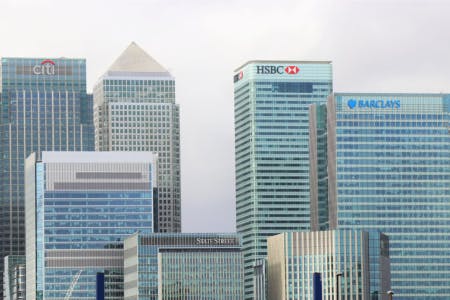What is the Bank of England’s base rate?
Chances are, you’ve likely heard the Bank of England’s base rate mentioned in the news - probably in relation to mortgage interest rates or inflation. But what is the base rate, and how does it impact you? Keep reading to find out.
In this guide
- What is the Bank of England’s base rate?
- How does the base rate affect interest rates?
- What is the history of the Bank of England’s base rate?
- What is the current Bank of England base rate?
- Why is the base rate going down?
- What’s going to happen to my mortgage costs?
- How low will the base rate go?
- When is the next Bank of England base rate meeting?
- How often does the Bank of England base rate change?
What is the Bank of England Base Rate?
What is the Bank of England’s base rate?
The Bank of England’s base rate, sometimes called the Bank of England rate or simply the base rate, is the rate the Bank of England charges other lenders to borrow money. It’s used by other banks and building societies to set their own interest rates on loans such as mortgages, as well as savings accounts.
Keep an eye on the current Bank of England base rate with our Tracker.
How does the base rate affect interest rates?
When the base rate goes up, this makes borrowing more expensive for lenders, so they often raise their own interest rates in response. This is good news if you’ve got cash in the bank, as you’ll earn more interest on your savings. But it can be bad news if you want to borrow money, as it makes taking out loans for things like mortgages, cars or personal finance more expensive. On the other hand, when the base rate falls, so does the cost of borrowing, so interest rates often tend to follow suit.
See what's happening with live rates and compare mortgage deals with our Mortgage Rate Comparison tool.
Worried about rising mortgage costs?
If you’re a homeowner or you’re thinking of applying for a mortgage, you might be worried about how these changes will impact your finances. Create a free Tembo plan today to see what rates you could be offered and the monthly costs.
What is the history of the Bank of England’s base rate?
The history of the Bank of England’s base rate goes back further than you might think. The base rate was created when the Bank of England was granted a Royal Charter by King William and Queen Mary in 1694. This charter originally stated that the bank was founded to “promote the public Good and Benefit of our People”, which at the time meant funding wars with France.
Over the centuries, the base rate has been used to cool or stimulate the economy or control inflation, in particular during uncertain times such as during wars, financial crises or pandemics.
If you look at how the base rate has changed since it was first introduced, you can see that there were some periods when the base rate stayed stable, and others when it was constantly in flux.

For example, the highest base rate level ever recorded was in 1979 when it peaked at 17%. The lowest ever recorded level was in 2020 when it fell to 0.1% during the Coronavirus pandemic. Typically, a much more normal range for the base rate is between 4-6%.
What is the current Bank of England base rate?
The Bank of England's base rate today is 4.00%. The Bank of England's Monetary Policy Committee (MPC) who set the base rate voted to cut the base rate from 4.25% to 4.00% in their meeting in August 2025, the third cut of the year. They will next meet on Thursday 18th September 2025 to determine whether they will cut the base rate again, hold it at 4.00% or increase it.
Why is the base rate going down?
The Bank of England voted to cut the base rate to 4.00% despite inflation increasing to 3.6%, to support the economy amid sluggish growth and a weakening jobs market. Typically, the Bank would wait for inflation to fall before considering another base rate cut. However, the base rate could be cut if the Bank of England thinks this is necessary to give the UK economy a boost. But the Bank is having to balance strengthening the UK economy with sticky inflation.
While we're far away from the 11.1% peak we saw after 2022's energy shock, inflation has recently been climbing. Latest figures show inflation was 3.6% in June, and could go higher to 4%, double the Bank’s 2% target. The Bank now says inflation won’t hit the 2% target until early 2027 - a slower return to “normal” than in the US or euro zone.
So it's not surprising the Bank of England's latest decision was for a modest reduction in the base rate, staying true to its "gradual and careful approach". In fact, the next base rate cut is not expected until November.
Keep reading: Tembo's mortgage rate and house price predictions for 2025
What’s going to happen to my mortgage costs?
If you’ve got a fixed-rate mortgage, you’re protected from interest rate rises until the end of your fixed term. If your fixed rate is set to end in the next six months, it may be wise to speak to a mortgage broker sooner rather than later. If you’re on a variable rate deal, every time the base rate rises, you will likely see an immediate impact on your monthly repayments.
Learn more: What should I do when my fixed-rate mortgage ends?
Struggling to remortgage? You're in the right place
Here at Tembo we can help you find the best rate for you from thousands of mortgage products, including whether it’s worth staying with your current lender. Get started today by creating a free Tembo plan.
How low will the base rate go?
Experts believe that the Bank of England will continue to cut the rate year this year, with some predicting just two cuts this year, and others believing rates could fall to 3.5% by early 2026.
When is the next Bank of England base rate meeting?
The Bank of England’s next base rate meeting will be held on Thursday 18th September 2025. They usually meet every six weeks, but during times of crisis they tend to meet more often.
How often does the Bank of England base rate change?
There is no hard and fast rule for how often the Bank of England’s base rate changes. The base rate will only be increased when the central Bank feels it’s necessary to do so. Some years, the base rate stays stable and barely changes, other times, like more recently, the base rate is changed each time the Bank of England meets.
See what you could rates you could be offered today
At Tembo, we’re experts at helping buyers and remortgagers increase their affordability, so you can buy sooner or access lower rates.



